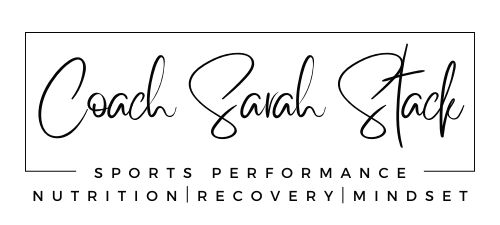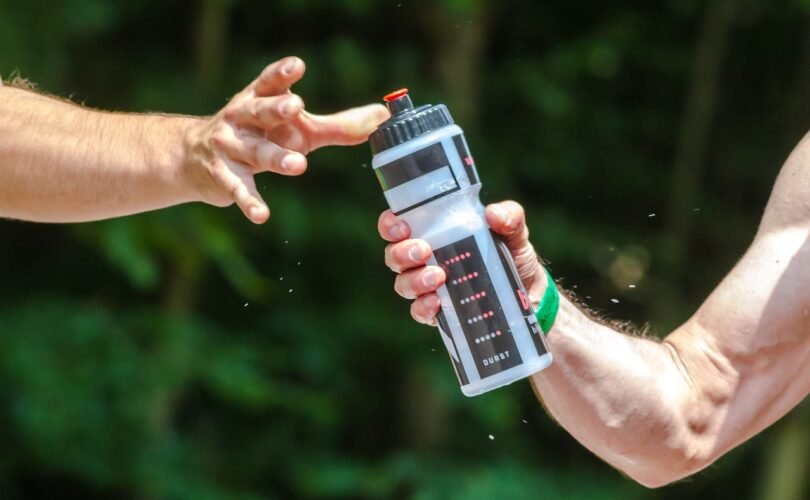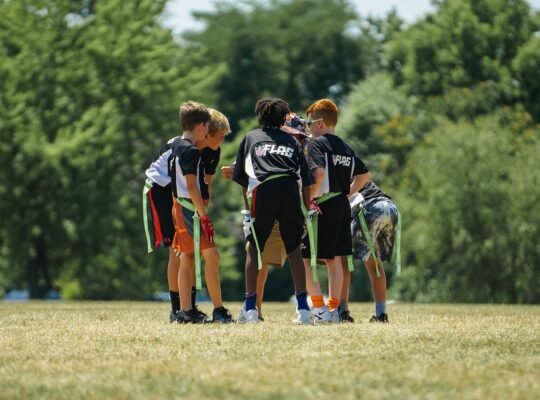Summer is here in South Louisiana. As temperatures rise and humidity increases we can’t help but be reminded about the importance of staying well hydrated. Sports drinks are a popular go-to for many of us, for ourselves and for our kids. In this blog post I’m going to discuss what a sports drink is, when we truly need to consume a sports drink, what to look for in a sports drink, and what you do NOT want to see in your sports drink. Finally, I’ll list a few of my favorite sports drinks on the market today.
Staying well hydrated is key for maintaining overall health and for many basic bodily functions such as regulating temperature, transporting minerals and nutrients, flushing out waste, and lubricating joints. In the summer months, temperature regulation is especially important. The water in your body is used to cool you off through sweat. Sweating occurs when water from your blood plasma is pulled through your skin to keep you cool. The more you sweat, the more your blood plasma volume drops. When your blood plasma volume drops your blood becomes more viscous and your heart has to work harder to circulate blood. Your heart rate increases and your power decreases as fatigue sets in. As such it is very important to take adequate measures such as prehydrating and continuously rehydrating during exercise.
What makes a sports drink a sports drink
Many people turn to sports drinks in the summer months to help them stay well hydrated. In its most basic form, a sports drink is water, electrolytes (namely sodium and potassium) and carbohydrates. Some sports drinks will advertise additional ingredients such as various vitamins and antioxidants, but these additives are not necessary and, in my opinion, distract from the essential ingredients listed above. Additionally, many sports drinks contain high amounts of sugar or artificial sweeteners, which will be discussed further later in the blog post. Sodium is the primary electrolyte that is lost through sweating. It is what helps your body maintain adequate hydration levels and prevent muscle cramps. It is true that the Standard American Diet (or “the SAD diet” as it is frequently and unfortunately appropriately referred to) is excessively high in sodium, and as such we see an emphasis on “low sodium” processed food products. However, sodium plays an important role and it is vital to consume it in healthy amounts, especially when exercising in hot and humid conditions. Potassium essentially acts as a vehicle for the sodium to be distributed throughout the body. It also aids in preventing muscle weakness, cramps and fatigue. Carbohydrates are our body’s primary energy source, so consuming a sports drink with carbs helps keep energy levels up and staves off fatigue.
When do we really need a sports drink
The sports drink industry is big business! Many grocery stores have most of, if not a whole aisle dedicated to sports drinks. This may lead you to think that sports drinks are necessary for every athlete, or every workout, however this simply isn’t true. Sports drinks should be reserved for prolonged exercise in hot environments. Prolonged exercise means 60 minutes or more. Hot environments include any situation that would cause someone to sweat excessively such as unairconditioned warehouse style gyms and fitness centers, outdoor bootcamps, or practices, games, or competitions for outdoor sports that occur in the summer. Lifting weights or a 45 minute fitness class in an indoor, air conditioned gym does not fall into either of those categories. Practice for an indoor sport, inside an air conditioned facility, does not fall into either of those categories. Plain water is all that is needed unless the exercise is prolonged and in a hot environment.
What to look for in a sports drink
As mentioned above, the key ingredients in a sports drink are sodium, potassium, and carbs. It’s also important to know how much of each of these ingredients should be in a sports drink. First, you need to take note of the serving size and the number of servings in each bottled sports drink. Some bottles contain 2 or more servings per bottle. For an eight ounce serving, you should look for around 100 mg of sodium, 20 mg of potassium, and between 7-10 g of carbs. In addition to taking note of the sodium, potassium and carbs, be sure to look at the sugar content. You want to see less than 5 g of sugar per eight ounce serving. If you prefer a sweet sports drink look for one that contains stevia or monk fruit as a sweetener.
What you do not want to see in your sports drink
Just as important as ensuring that your sports drink has the right ingredients in the right amounts, is ensuring that your sports drink does not have certain ingredients. High amounts of sugar and artificial sweeteners have no place in sports drinks, yet most contain one or the other. You should try to choose a sports drink that contains no more than 5 g of sugar per eight ounce serving. If the sports drink does have a low amount of sugar on the nutrition label, be suspicious, and read the ingredients list. Look out for sucralose as an ingredient. Sucralose is Splenda, and while it has been approved by the FDA, it is also associated with a host of negative side effects including:
- Upsetting your gut microbiome
- Gastrointestinal issues such as bloating, gas, diarrhea, and cramping
- Increased inflammation
- Causing a glucose response that is equal to that of sugar
- Possibly triggering migraine headaches
Sweeteners such as stevia and monk fruit are much better, natural sweeteners.
Coach Sarah’s top picks
So, after digesting all of this information, does it feel like you’ll be spending a large amount of time reading nutrition labels in the grocery store? While that is not necessarily a bad thing, I understand that not many of us have time for that these days. So, here are a few sports drinks that I can comfortably direct you towards. The truth is that none of these options are perfect, but they are the best I’ve found that kids (and adults with a sweet tooth) will most likely accept.
Liquid IV – Top Choice These stick packs are very convenient, they are also just barely over my 5 g of sugar per 8 ounces rule at 11 g of sugar per 16 ounces. The sodium to potassium ratio is good, and they are sweetened with stevia. They come in a variety of flavors, and did I mention that they are very convenient? You can order these on Amazon or directly from the company.
Body Armor Lyte – Be sure that you choose the LYTE version of this drink. The sodium in this option is actually pretty low, and the potassium is really high. The sodium content is an easy fix if you simply sprinkle a little salt in the drink (yes, you read that correctly!) Regarding the potassium, if you choose this drink, don’t pair it with another high potassium food such as bananas or dried fruits such as mangos or raisins.
Nuun – Nuun tablets are super convenient, they do not contain artificial sweeteners, are very low in sugar at just 1 g per 16 ounces but, like Body Armor Lyte, the sodium to potassium ratio is not great. This can be easily remedied by sprinkling in a little salt. Additionally, if you or your kid has a sweet tooth they may not find Nuun tablets to be sweet enough.
Gatorlyte – This is the ONLY Gatorade product that I would include in this list due to the high sugar content or artificial sweeteners used in most Gatorade products. Gatorlyte, has a reasonable sodium to potassium ratio (potassium is little high) and while the sugar content is a little high at 12 g in 16 ounces it is not outrageous, and it is sweetened with stevia not sucralose. (It is important to note that Red 40 and Yellow 8 are used in some flavors; and while I did not include a discussion of artificial food colorings in the post, there are possible side effects associated with consuming them.)
If you find yourself in a store like Whole Foods looking for electrolyte powders, remember to keep the 100 mg sodium to 20 mg of potassium ratio per eight ounce serving in mind. You are likely to find some options that do not contain sucralose, but may not have enough sodium to do the trick. In that case, sprinkling a little salt into your drink can help.
I’m sure this list is not exhaustive, so if you find a sports drink or electrolyte powder that meets my criteria stated above PLEASE share it with me!








[…] You can learn more about hydration and sports drinks in particular, here. […]